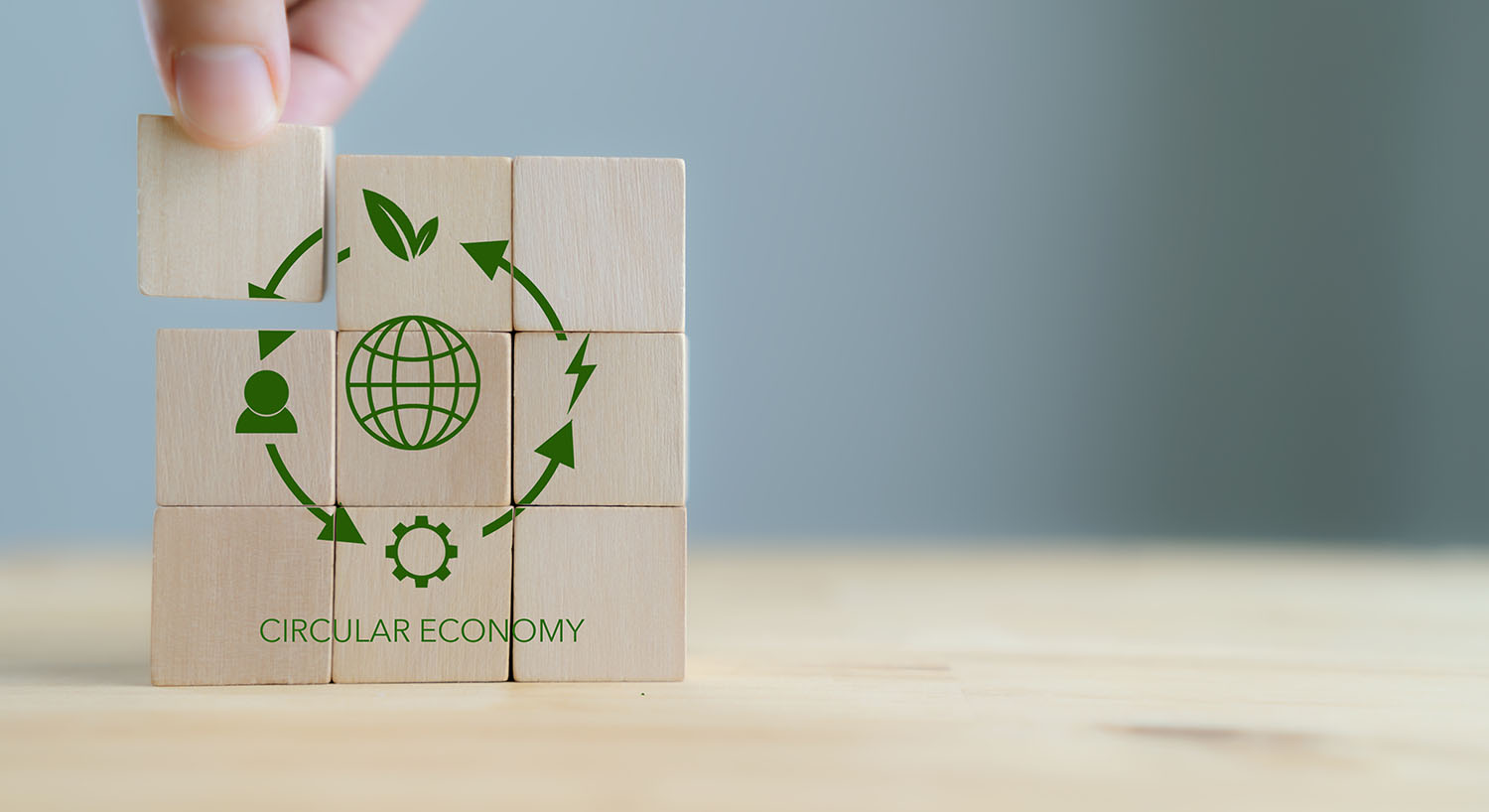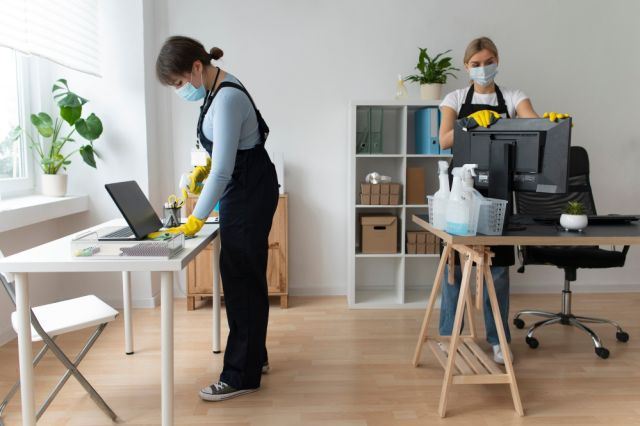How Businesses Contribute to the Circular Economy

The circular economy is about changing the way we produce, assemble, sell and use products to minimise waste and our environmental impact.
Society is demanding actionable and measurable change to reduce our impact on the climate and degradation of the natural world. The circular economy presents the best strategic framework we have to meet sustainability targets1, which the traditional linear economy cannot address.
So how can businesses embrace the circular economy in their operations? Is there a role for commercial cleaning companies to help businesses achieve circular waste goals? This blog explores these concepts.
The Circular Economy
The circular economy is about changing the way we produce, assemble, sell and use products to minimise waste and our environmental impact. A circular economy involves diminishing our reliance on finite resources and transitioning to renewable resources, as well as extending the life of products and ‘designing’ waste and pollution out of the system. Essentially, a circular economy describes a regenerative economic system. (to find out more click here).
The concept of the circular economy is becoming more widely accepted and a guiding force in business and government strategy. Despite this, there remains some confusion among Australian businesses about how they can tackle the circular economy and create Circular Business Models¹.While agreeing it’s important for the future of our planet, incorporating holistic circular economy principles into business sustainability agendas can be difficult and many don’t know where to start.
So how can businesses create Circular Business Models?
The circular economy is based on three principles, driven by design:
- Principle 1: Eliminate waste and pollution
- Principle 2: Circulate products and materials/Extend their useful life
- Principle 3: Regenerate nature
All the principles are underpinned by a transition to renewable energy sources.
The range of possible solutions for these principles means that ‘circularity’ can look different for every business. It is a good approach however to look at these principals individually and determine the different ways your business can address them. Only by integrating all three in a concerted approach, however, can a fully circular economy be achieved.
According to the Australian Circular Economy Hub, Principle 1 is about “understanding that waste and pollution are largely a result of the way we design things and finding new and innovative ways to design out those negative impacts”². As such, it encourages businesses to harness new materials or technologies to ensure waste and pollution are not created in the first place. A prominent example of this kind of ‘circular thinking’ is the move towards reusable alternatives to single-use items such as coffee cups, water bottles and plastic straws. This might be a simple place to start before considering how design changes can reduce waste in other areas of building management or operations!
Principle 2 is about looking at the resources businesses produce and how to keep them in the economy for as long as possible. Businesses can demonstrate ‘productstewardship’ by prolonging their products’ lifecycle and managing their ‘end of life’ with recycling, reusing, repairing or remanufacturing strategies. Indeed, resource recovery is a large component of this principle and businesses also need to ensure appropriate collection systems for our various waste streams.
Principle 3 encourages companies not just to do less harm, but to do good for the environment. This can involve a range of projects such as increasing biodiversity levels (e.g.: through carbon offset tree planning) or enhancing ecosystem services, but ultimately, it’s about doing good for the world around us.
Going to The Australian Government Circular Economy Website and the Australian Circular Economy Hub is a great place to start when embarking on your circular economy approach. They contain information and industry case studies to get inspiration, as well as information on government grants and schemes you can get involved in.
Can your Commercial Cleaning Company Help?
They sure can! It is a great idea to leverage your supplier relationships and their expertise to help with your circular economy practices.
Commercial Cleaning businesses for example can devise clever waste solutions, segregating them into multiple streams that go to dedicated waste recycling plants (think organics, glass, soft plastics, coffee cups, cardboard, electronic waste, etc). Many also have relationships with ‘closed loop’ recycling businesses, where they will send your waste. GJK for example, partners with Simply Cups, which removes used coffee cups from customer sites and transforms them into items of higher value. At another site, we transport organic waste to ReWaste – a food-to-electricity plant that uses aerobic digestion to create energy that powers homes in the local area. There are a host of circular ideas that can be integrated into your waste management operations that commercial cleaning companies can help implement.
Experienced commercial cleaning businesses can also provide you with waste stream reporting, so you can track success and make improvements. They can further assist with communication strategies to improve stakeholder recycling behaviours and report on own carbon footprint, so you can have greater transparency of your supply chain sustainability.
The circular economy marks the way forward for sustainability management. While principles can be challenging to address for Australian businesses, strategies should leverage experienced partner relationships to full effect.
References:
1. Steering Committee Spotlight: Ashleigh Morris – Circularity Live
2. Three core principles of the circular economy (acehub.org.au)




